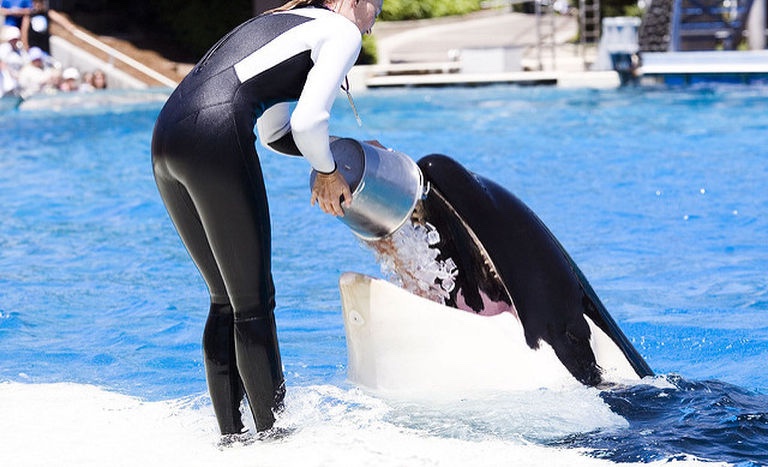Orcas are the ocean’s top predators, capable of killing anything from fish to birds and sharks to baleen whales. By studying orca populations in the eastern North Pacific Ocean, three distinct dietary eco-types have been identified. Whether they’re classified as resident (fish-eating), transient (mammal-eating) or offshore (fish-and-shark-eating), orcas have developed sophisticated hunting techniques, many of which co-operative, to successfully prey on more than 140 species of animals.

Photo by Astrid van Ginneken / Center for Whale Research.
In their wild habitat, orcas spend between 65% to 90% of daylight hours foraging and hunting for food. However, in captivity, orcas are stripped of the ability to forage and given no opportunity to hunt live prey. Instead, they are hand fed a diet of frozen fish which has a lower water content than fresh fish due to freezing and thawing processes, leading to chronic dehydration.

Photo by Thomas Hawk.
One of the causes for dorsal fin collapse (also known as flaccid fin syndrome) is linked to dehydration. Collagen, the structural protein the dorsal fin consists of, requires water to maintain its rigid structure, therefore, dehydration will weaken the structure causing the dorsal fin to collapse. To counteract the lower water content diet, captive orca are given ice and gelatine (a substance that is not natural to them) in attempt to keep them hydrated. Tilikum, who weighed 12,000 lbs, consumed 83 lbs of gelatine a day prior to his death in January 2017.